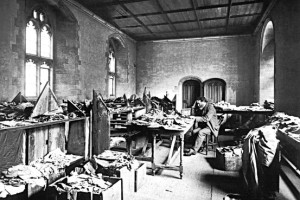Lawrence H. Schiffman. “The Significance of the Scrolls,” Bible Review (6:5),1990.
The second generation of scholars—or is it the third?—offers a new perspective on the texts from the Qumran caves
Dead Sea Scroll scholarship is undergoing a virtual revolution. New ideas and perspectives are percolating among the small group of scholars who dedicate themselves to primary research on the content of the scrolls. Recent publications focus on major changes in the way Dead Sea Scroll research affects our understanding of the history of Judaism and Christianity.
What are these new perspectives? How do they differ from the scroll scholarship of the past 40 years? What is likely to emerge from the still-unpublished materials? These are the questions we will try to explore here.
In a strange way, Dead Sea Scroll research really began 50 years before the first Dead Sea Scrolls were discovered in 1947. In 1896, a Cambridge University scholar named Solomon Schechter traveled to Egypt to purchase the remains of the Cairo Genizah (geh-NEE-zuh), a vast treasure-trove of Hebrew manuscripts from the storehouse of a synagogue in Fustat, Old Cairo. Among the many important documents he recovered there were two medieval manuscripts of part of a hitherto unknown work now known to scholars as the Damascus Document (because it mentions an exile to Damascus).
Read the rest of The Significance of the Scrolls in the online Biblical Archaeology Society Library.




